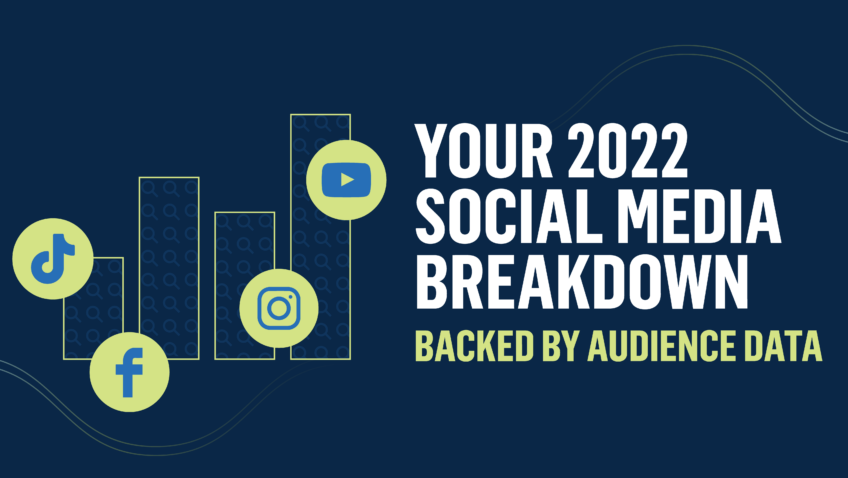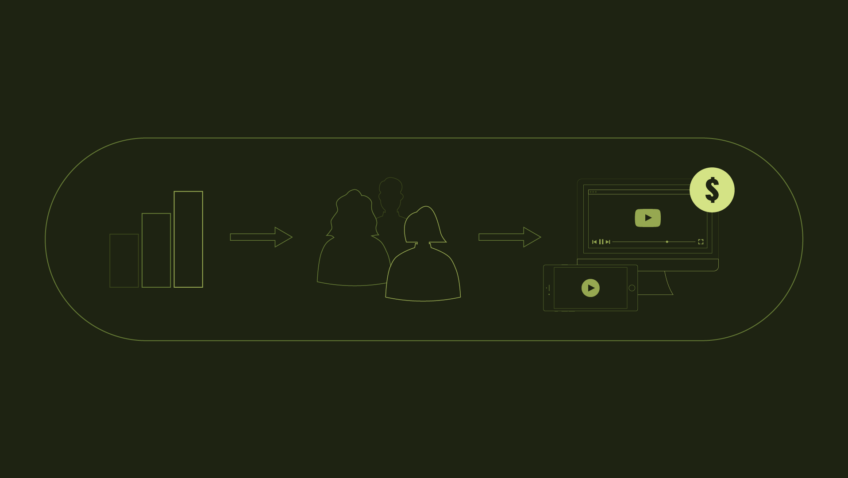The Evolved Role of the Marketing Department in Our Digital Age
I am thrilled to be keynoting Capacity Interactive’s Digital Marketing Boot Camp for the Arts this October. “Prepare to get your geek on.” That tagline is music to my geeky, data-loving ears.
As the Chief Market Engagement Officer at IMPACTS, my job involves translating big data concerning trends in audience behaviors and perspectives, and making it both accessible and actionable to the hard-working folks who run cultural institutions. I work with boards and executives at major institutions regarding data-informed best practices related to earned revenue, the visitor experience, creating access programs that actually work, and cultivating donors. My focus is on how audiences think and behave. After all, it is living and breathing human beings that arts organizations aim to educate and inspire.
Despite the importance of having all-hands-on-deck for driving organizational success, it’s become clear in my work that there’s one department that data suggest increasingly leads the charge within cultural organizations. It’s a department that makes the whole kit and caboodle work… and that department is marketing.
“Wow. Bold statement, Colleen.”
It’s not, really.
This isn’t to say that other departments are at all unimportant. Simply, the way that audiences take in information, make decisions, and communicate has changed significantly in the last decade, and organizations may have a ways to go in accepting and integrating important changes related to marketing departments. It seems silly that how people connect and make decisions has changed so dramatically while cultural organizations’ hierarchies, structures, and operations may have largely stayed the same.
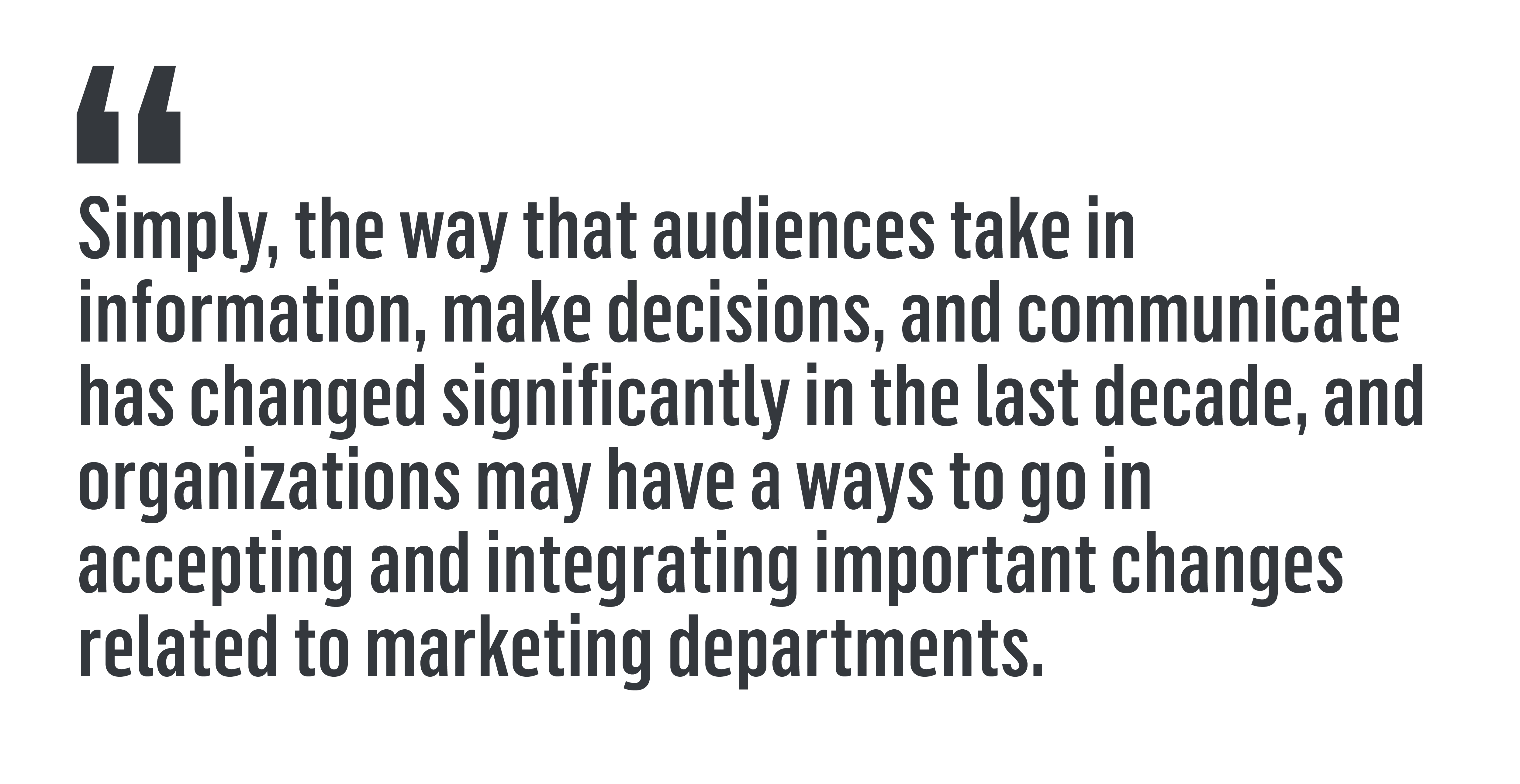
Seth Godin wrote, “The best way to thrive in a world that’s changing is to change.” Here are five changes that have taken place regarding the way that the marketing department works and what it manages.
1. Marketing is now an organization’s mouth and ears
This is a big change and a big responsibility. Traditional communication channels – the ones upon which cultural organizations relied in a pre-digital age such as radio, television, magazines, direct mail, and brochures – talk at audiences. These traditional mediums were (and largely remain) one-way communication channels. They were used as mouths to share messages, but they did not (and do not) easily invite response or dialogue without a change from one communication channel to another (i.e. from television to Twitter).
Along with the advent and rise of digital communication platforms has come the responsibility for organizations to talk with audiences. Social media and web-based platforms supply organizations with mouths to talk at folks, but they also allow for response and dialogue with people. They necessitate the use of an organization’s ears – and this is a big deal. On a basic level, it essentially doubles the workload and responsibility of an organization’s marketing department compared to a pre-digital era.
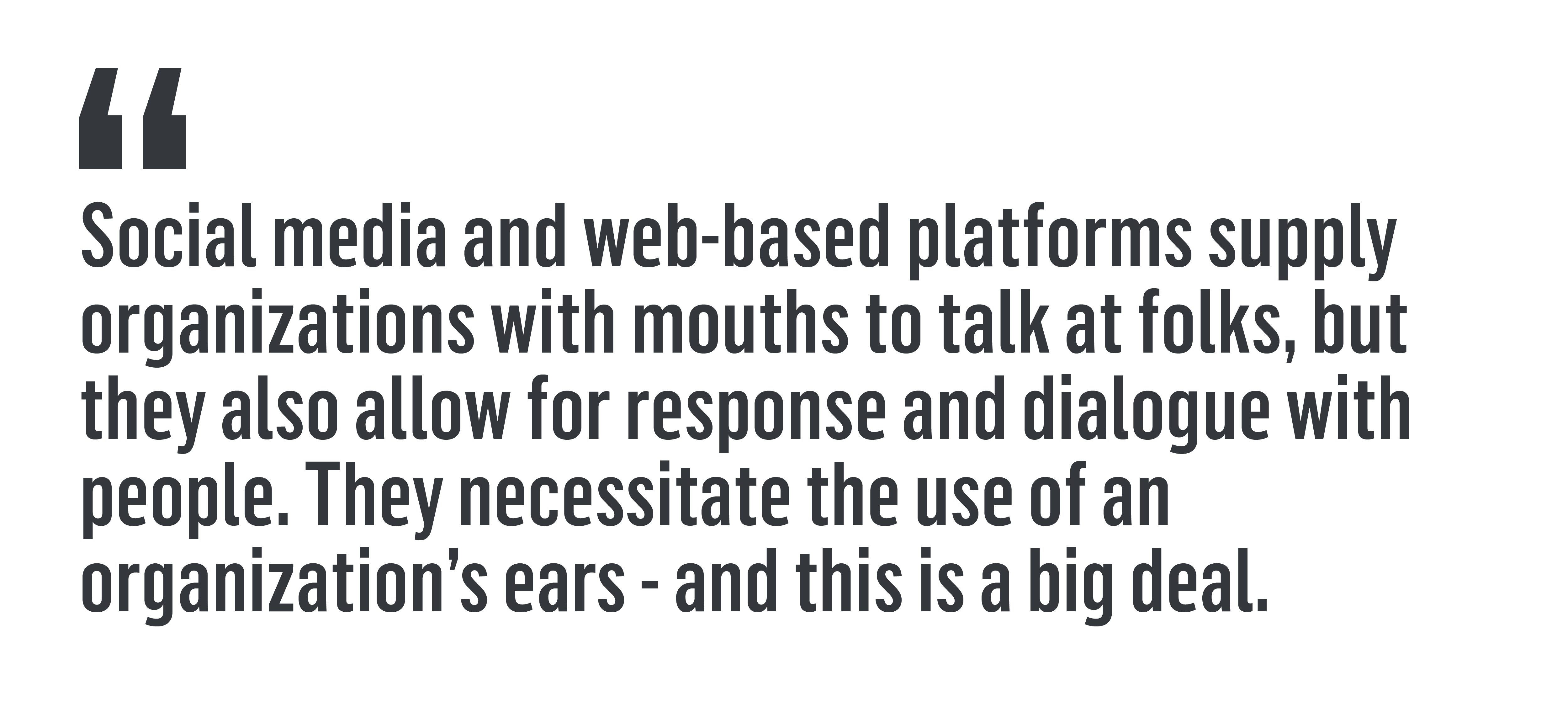
According to data from IMPACTS, likely visitors to cultural organizations are 2.5x more likely than the average person to be connected to the web at home, at work, and on a mobile device. This digital connectivity increases the demand for real-time responsiveness, perceived transparency, and “proof” of ongoing mission execution by way of continuous content. That’s a lot of important (and new) responsibility thrust upon these hard-working departments that stands to be more readily recognized!
2. Good marketers do not sell – they connect
In my experience with IMPACTS’s clients, successful organizations are those that understand that the role of marketing has evolved and enlarged. Today, good marketing departments do more than “sell” or even “communicate.” Good marketing departments connect.
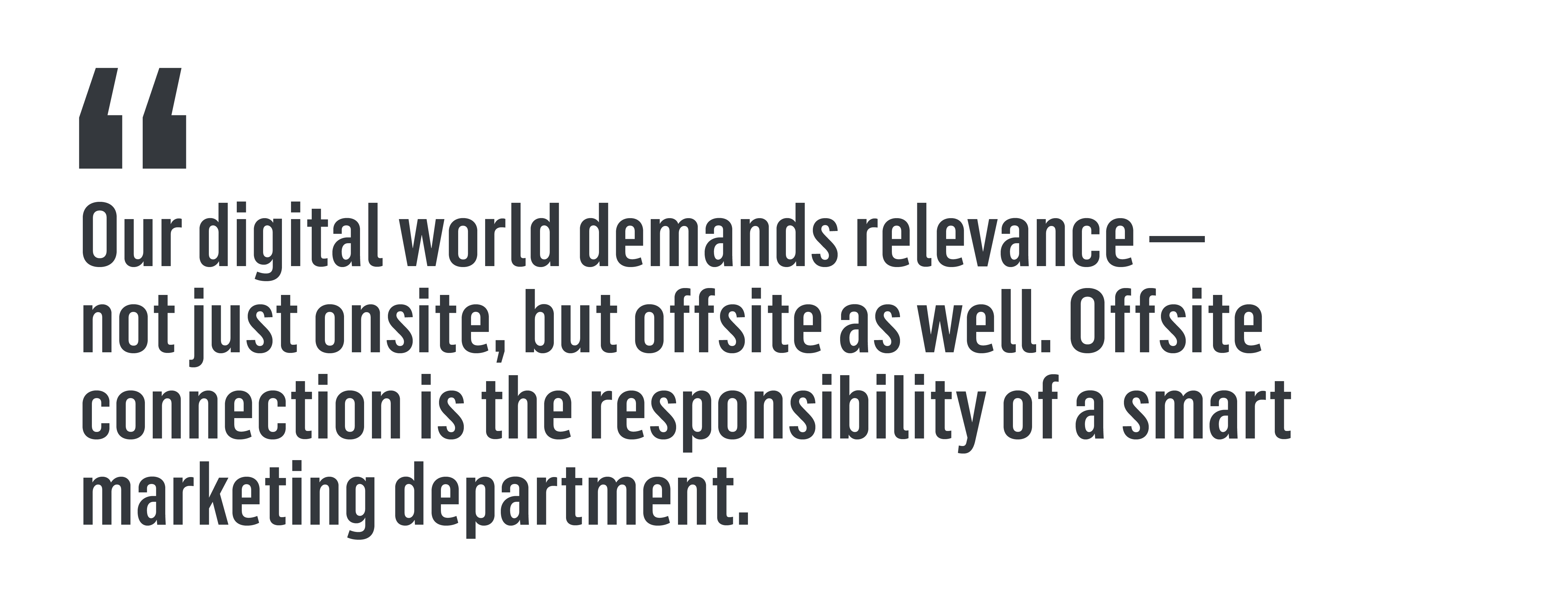
While it has arguably always been the charge of marketing departments to connect (as connection may be prerequisite to motivating behavior), marketers are now tasked to do this with real-time tact and authenticity. The ability to speak, listen, respond, and generally interact with audiences offsite in new and engaging ways allows for stronger connections with potential visitors.
Our digital world demands relevance – not just onsite, but offsite as well. Offsite connection is the responsibility of a smart marketing department.
3. Talking about the market is not the same as “marketing talk”
Like other entities today, it’s increasingly important for cultural organizations to make data-informed decisions. After all, they have more access to information than ever before! Being a data-informed organization means understanding the preferences, perceptions, and behaviors of audiences and non-audiences alike. It means understanding the market. Frustratingly, perhaps, the word “market” is at the root of “marketing,” and that may be causing some confusion for those outside of this department. Specifically, it may drive the potential misunderstanding that any talk about “the market” or market behaviors are squarely the responsibility of the marketing department alone.

This is a rather silly proposition. Certainly, marketing departments are in a prime position to know a great deal about target audiences – after all, they are an organization’s ears! That said, audience preferences, perceptions, and behaviors affect far more than marketing – they affect fundraising, visitor experiences, operations, education programs, and overarching strategies. Sometimes they affect these things more than they affect marketing.
Have you ever heard a leader request that the marketing team increase an organization’s Yelp or TripAdvisor ratings? Try as they might, it’s difficult for marketing professionals to, “We are so sorry to hear…” the organization out of an ongoing experience gripe. Though the interaction takes place on the web, the ratings are not always indicative of marketing misses, but of experiential challenges or other operational disconnects.

4. Marketing is no longer a service department – it is a strategy department
Remember how I explained that digital communications – like web and social media – allow organizations to have mouths and ears? This change doesn’t simply increase an organization’s workload. This new ability to hear can help organizations learn, grow, and create more positive overall experiences!
Because marketing departments today are necessarily more attuned with an organization’s audiences than ever before, they tend to have their fingers on the pulse of public perceptions (or at least, they are closer to it than inward-facing departments).
Perhaps the biggest change that my colleagues and I have encountered in terms of arts operations is the integration of marketing departments in the development of programs at their outset rather than simply being tasked to “market this” after the program has been fully realized.
5. Reputation plays an undeniable role in visitation
I saved this point for last, but it may be the most important – and the data behind this is a big part of my talk at Digital Marketing Boot Camp for the Arts.
IMPACTS data suggest that among the United States market, “reputation” is a top-five motivator for visitation. For those who profile as likely visitors to cultural organizations, “reputation” is the second decision-making motivator for visitation. It’s the marketing folks that largely manage an organization’s reputation and – as I will demonstrate with considerable data in October – digital platforms play a large and growing role in contributing to an organization’s reputation.
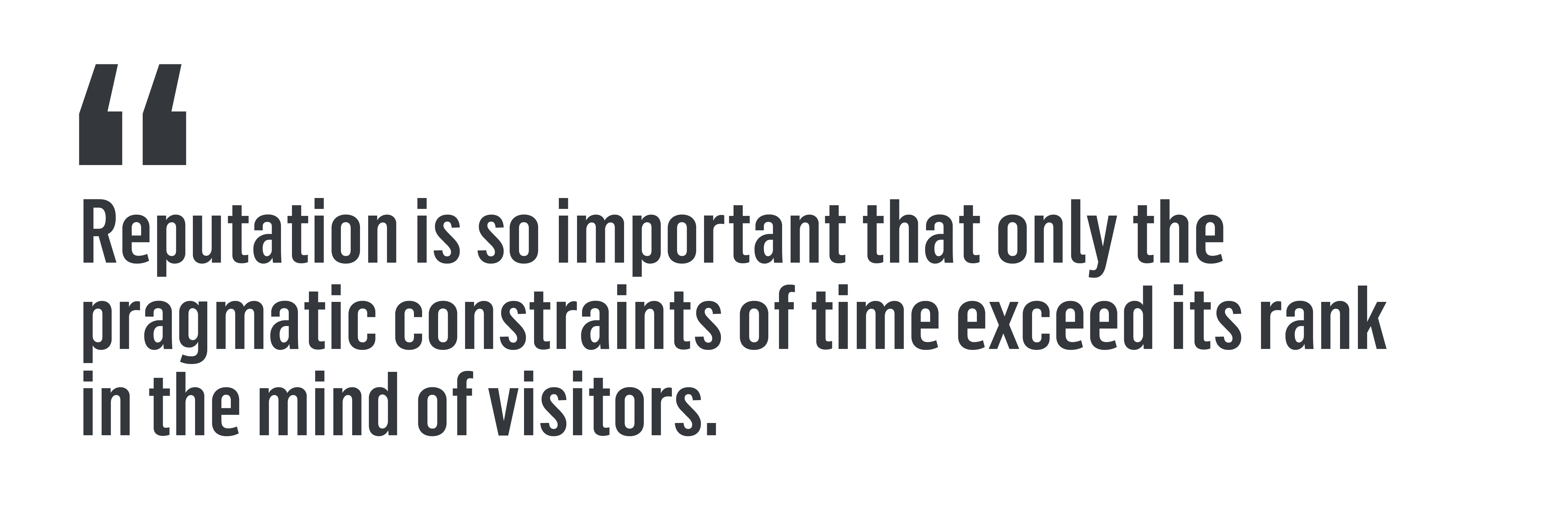
(For those wondering: “Schedule” takes the top spot among likely visitors, and this involves simply being open or having programs during the days and times when people actually can and want to attend. Makes sense, right? Reputation is so important that only the pragmatic constraints of time exceed its rank in the mind of visitors. It is more important than travel distance, and it’s more important than admission cost by a long shot.)
Our digitally connected world becoming increasingly data-informed is great news for cultural entities! It means that we can make better, smarter decisions with increased confidence that they will contribute to mission execution and financial solvency. (Woohoo!) However, being a data-informed organization also comes with the responsibility to understand how our organizations connect and engage audiences…and the responsibility to make appropriate space for staff members in these organizations to do this most efficiently and effectively.
I’m eager to show you just how important digital engagement is for an organization’s success. You bring your self. I’ll bring the data.
See you in October.
Colleen Dilenschneider is the Chief Market Engagement Officer at IMPACTS Research and author of the popular website Know Your Own Bone. She will be presenting at this year’s Digital Marketing Boot Camp for the Arts on The Data-Informed Importance of Digital Engagement for Arts Organizations.





